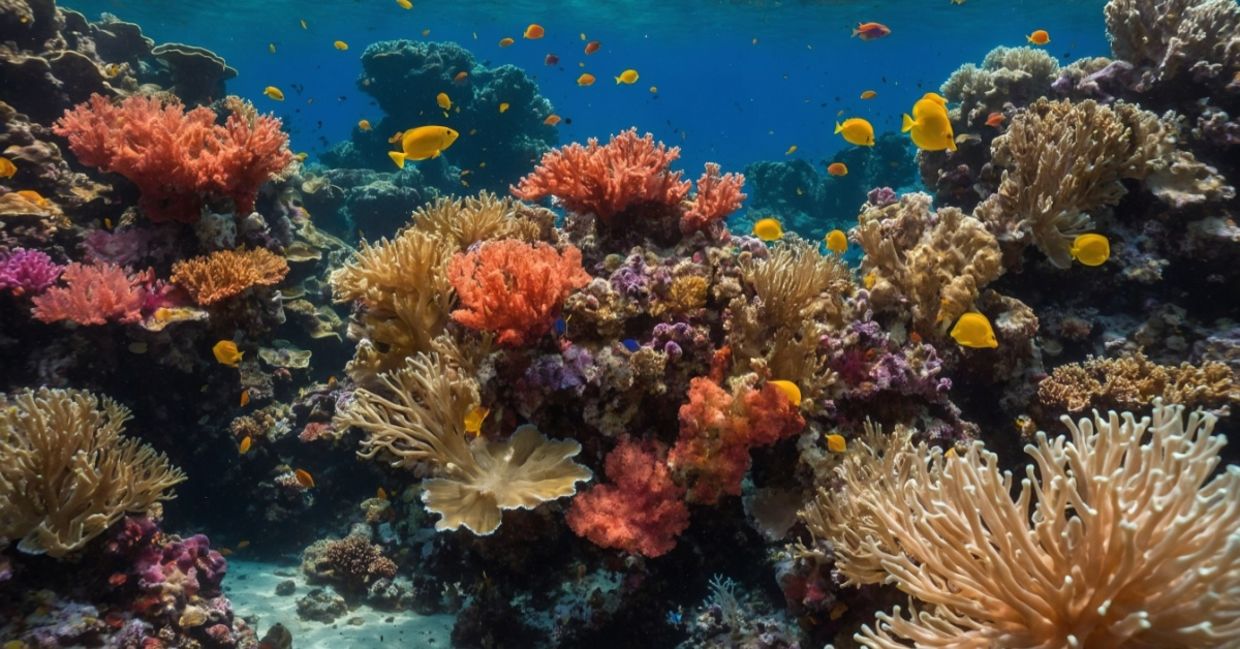
(Qasimphotographer / Shutterstock.com)
The colorful reefs of coral that stretch along Florida’s coastline are things of beauty. Though they look like interesting and wonderfully shaped rocks, coral are actually alive, and the reefs they form are vitally important as storm-breakers, protecting the coast from flooding and damage.
However, climate change and warming sea temperatures have wreaked havoc on these fragile ecosystems. Luckily though, reported APNews, scientists from the University of Miami are working with colleagues at Tela Marine in Honduras to embark on a daring venture to save Florida’s coral reefs. By cross breeding the local coral with Honduras’s more hearty and heat-resistant ones, they hope to breathe new, sustainable life into the coral reefs along the state’s coastlines.
Elkhorn and Algae
Though corals come in a huge variety of shapes, colors, and sizes, the joint project focuses on a specific type of coral called elkhorn coral. These tall and horn-like creatures are an iconic part of Florida’s reef system because they form the crest of the reef, forming the barrier that protects the coastline from storms and flooding.
Unfortunately, in 2023 Florida’s elkhorn corals were hit by a disaster. Warming sea temperatures led to extensive coral bleaching — when the algae which give the corals their delightful color release toxic compounds leading the coral to eject them. What remains are the stark white skeletons of the coral, weakened and susceptible to disease.
That is where the scientists from the University of Florida and Tela Marine come in. In July of 2024, according to a University of Florida press release, Professor Andrew Baker of the Rosentiel School of Marine Atmospheric, and Earth Science at the University of Miami and his team brought back live coral from the reefs of Tela Bay on the eastern coast of Honduras.
Amazingly enough, these corals thrive in the murky, hot water there, and the hope is that by crossbreeding them with the Florida coral, the scientists can create a heat-resistant strain of coral.
International Collaboration
Now, reported AP, during the summer of 2025, the crossbred coral has spawned and grown and is ready to be transplanted into the reef along Miami’s coastline. Small fragments of coral were placed on concrete bases along the edge of the reef in such a way that their health and growth can be compared to the coral with Florida parents alone, as opposed to Florida and Honduras parents, as these have.
If these corals thrive, this could be the beginning of wider international collaboration between scientists in the United States and those throughout the Caribbean.
Juli Berwald, co-founder of Tela Coral, told AP, “This is a project about international collaboration, about the fact that our environment really doesn’t have closed borders, that we can work together to make things better in the world. And it shows that when we talk to each other, when we work together, we can really do something that might be life-changing, not just for us but for the corals and the reefs and all the animals that rely on the reefs.”
YOU MIGHT ALSO LIKE:
Israeli Study Discovers a Way to Restore Coral Reefs
8 Countries Are Partnering Up to Save Red Sea Coral Reefs
Hungry Algae Eating Tiny Sea Urchins Could Save Hawaiian Reefs







